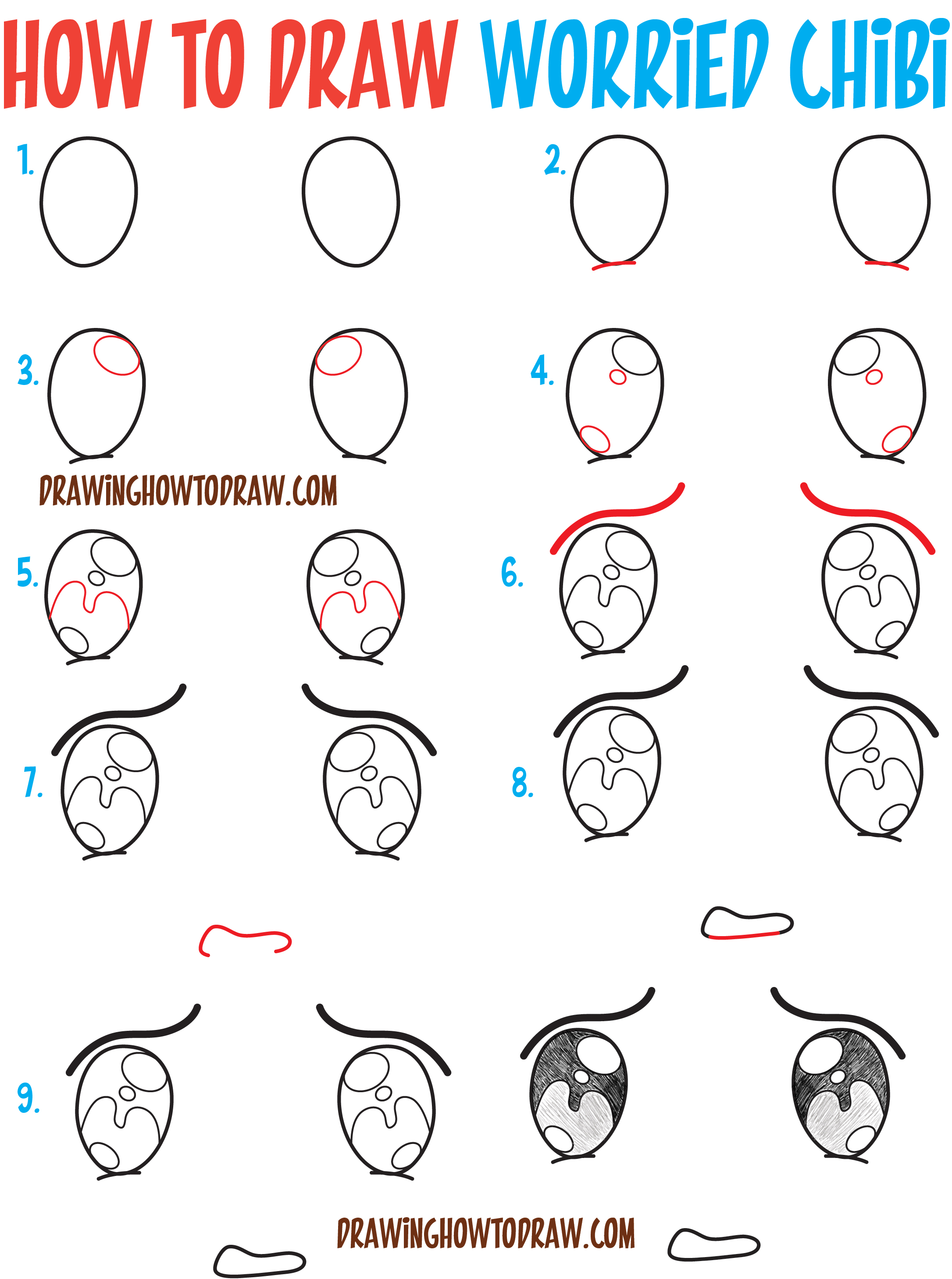Learn to draw emotions a table that shows how to depict each emotion
Table of Contents
Table of Contents
Do you struggle with conveying different emotions in your drawings? Emotions are a crucial component of any art form, and being proficient in drawing them can greatly enhance your craft. In this article, we will explore how to draw emotions and provide some tips and tricks to make your drawings more expressive and emotive.
The Pain Points of Drawing Emotions
Artists often struggle to capture different emotions in their drawings. Whether it’s conveying happiness, sadness, or anger, it can be challenging to make your characters look authentic and convincing. Additionally, not knowing where to start or how to approach drawing emotions can be frustrating and discouraging for artists of all levels.
Answering the Target of How to Draw Emotions
To draw emotions, it’s essential to understand the different facial expressions that convey them. The eyes, eyebrows, mouth, and nose are all key elements that contribute to expressing different emotions. For example, a smile with raised cheeks and relaxed eyes conveys happiness, while downturned lips and furrowed eyebrows depict sadness.
Main Points of How to Draw Emotions
- Facial expressions are crucial in conveying emotions.
- Different emotions have distinct facial features, such as the eyes, eyebrows, mouth, and nose.
- Practice is key to improving your ability to draw emotions.
- Using reference images can be helpful in understanding different facial expressions.
How to Draw Happy and Excited Emotions
One technique for drawing happy and excited emotions is to exaggerate the facial features. For example, you can raise the eyebrows and widen the eyes to give the appearance of surprise or happiness. Additionally, a big, toothy smile can portray excitement and joy. Try experimenting with different combinations of features to find what works best for your character.
 Personally, I find it helpful to practice drawing different expressions, even if they aren’t directly related to the characters or scenes I’m working on. This helps me to build up a mental database of expressions that I can use when creating new artwork.
Personally, I find it helpful to practice drawing different expressions, even if they aren’t directly related to the characters or scenes I’m working on. This helps me to build up a mental database of expressions that I can use when creating new artwork.
How to Draw Sad and Angry Emotions
Sad and angry emotions are often depicted with downturned or furrowed eyebrows, respectively. The mouth is also an essential feature to convey these emotions, with a frown or pout depicting sadness and a snarl or sneer indicating anger. When drawing these emotions, it’s important to pay close attention to the shape and positioning of these features.
 It can be challenging to accurately convey complex emotions such as sadness or anger. Experimenting with different combinations of facial features and referencing real-life emotions and expressions can be helpful in achieving a convincing result.
It can be challenging to accurately convey complex emotions such as sadness or anger. Experimenting with different combinations of facial features and referencing real-life emotions and expressions can be helpful in achieving a convincing result.
Practicing Drawing Emotions
As with any aspect of art, practice is key to improving your ability to draw emotions. Try dedicating a portion of your drawing time to practicing different facial expressions and experimenting with different techniques to capture them. Additionally, using reference images of real-life emotions or other artists’ work can provide insight into effective ways of conveying different emotions.
 Question and Answer
Question and Answer
1. Can I draw emotions with just black and white pencils?
Yes! While color can add depth and nuance to your drawings, it’s possible to convey emotions effectively using monochrome pencils. Paying close attention to the shading and texture of your illustrations can help to create a convincing result.
2. How can I practice portraying emotions without a reference?
One option is to use a mirror to practice different facial expressions yourself. By observing your own features and analyzing the movements and shapes of your face, you can gain insight into how to draw these emotions more convincingly.
3. Are there any shortcuts to drawing emotions?
Unfortunately, there are no shortcuts to mastering any aspect of art. It takes time, dedication, and practice to improve your abilities. That being said, using reference materials and studying the works of other artists can help you to learn and improve faster.
4. How can I make my drawings of emotions more unique?
Experimenting with different styles, techniques, and combinations of features can help you to develop a unique approach to drawing emotions. Don’t be afraid to try new things and push yourself out of your comfort zone!
Conclusion of How to Draw Emotions
Drawing emotions is an integral aspect of character design and storytelling. By understanding the different facial features and expressions that convey emotions, you can create more dynamic and expressive characters. Remember, practice is key to improving your abilities, so don’t be afraid to experiment and try new things!
Gallery
How To Draw 8 Different Chibi Emotions - YouTube

Photo Credit by: bing.com / emotions chibi draw different
Webquest | Emotion Chart, Emotion Faces, Feelings Chart

Photo Credit by: bing.com / emotion feelings chart emotions faces draw choose board feeling feel
How To Draw Worried / Ashamed / Embarrassed Chibi Expressions And

Photo Credit by: bing.com / draw chibi expressions worried drawing emotions easy beginners step embarrassed expression emotion drawings tutorial tutorials steps ashamed nervous reference eyes
Learn To Draw Emotions. A Table That Shows How To Depict Each Emotion

Photo Credit by: bing.com / human emotion gaze pupil bardotbrush
How To Draw 20 Different Emotions | Different Emotions, Emotion Faces

Photo Credit by: bing.com / emotions different draw expressions face faces drawing emotion drawings feelings cartoon facial kids english easy human emotional expression shoorayner character





